By Mary Beth Pongrac
I bought my first camera trap in 2019 with the goal of documenting wildlife around Sechelt, BC where I live. Today I have multiple cameras, which have captured a number of interesting species. One of my most recent and interesting discoveries from my cameras took place earlier this winter.
On the way to check one of my camera traps on February 17 of this year, I noticed what appeared to be a scrape about 50 m from the camera. Since it was a relatively large, I figured it might have been made by a cougar.
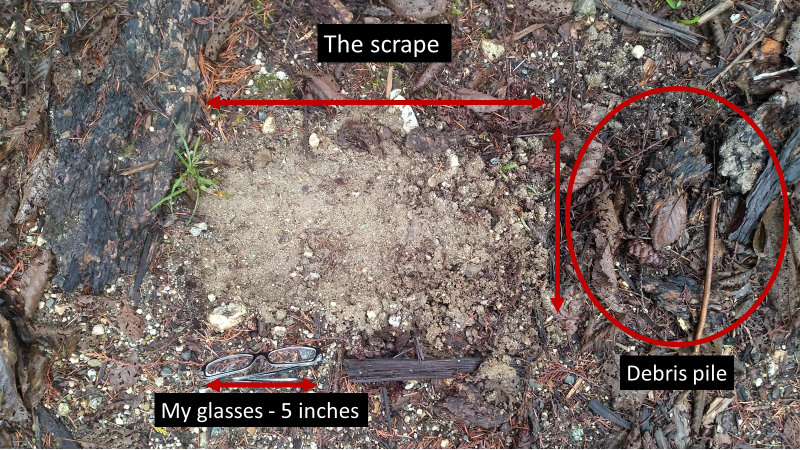
I know that cougars sometimes urinate or defecate on the debris pile, so I used a stick to break it apart. I discovered some scat beside it that was about an inch in diameter, which was also very tightly bound. I also noticed the scat was covered in a very thin, whitish, transparent membrane, which was something I had never seen before. I pulled the scat apart, and realized it mostly consisted of fur but interestingly, some of the fur was in strips about 3 inches long and still attached to the skin of the animal.
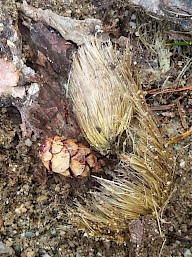 |
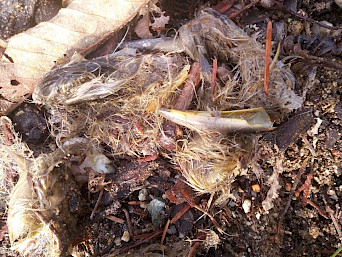 |
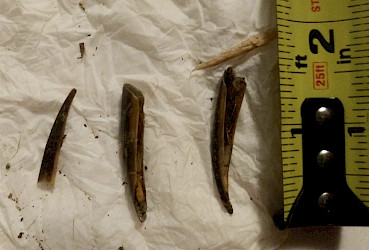 |
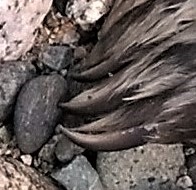 |
I was stumped! I tried searching the internet for answers but couldn’t find any mammal that would have claws like these or a bird whose beak looked like this. I also wondered why, if this was a bird, how many the cougar would have eaten, since there were three of these beak-like objects in the scat and I couldn’t explain the absence of feathers.
I then remembered seeing an article about coastal cougars feeding on seals and recalled that I had taken a photo several months prior of a dead harbor seal on the beach. It occurred to me that the beak-like objects I saw in the scat could be harbor seal claws! To be sure, I contacted one of the authors of the article, Max L. Allen, who quickly let me know that he agreed with my assessment, especially since this particular camera was only about 2 km from the Sechelt Inlet, an area inhabited by harbor seals.
I got some more evidence when I checked my camera trap - sure enough, there was a photograph of a cougar at the camera site just three days before I found the scrape, which I believe was made by the cougar. After seeing these photos, Max said that it looked like a mature male cougar. Given that scrapes tend to be made by male cougars, I concluded that it was this cougar that ate the seal!
Discoveries like this are why I enjoy using camera traps and I am excited to see what other amazing wildlife I will see in the future.
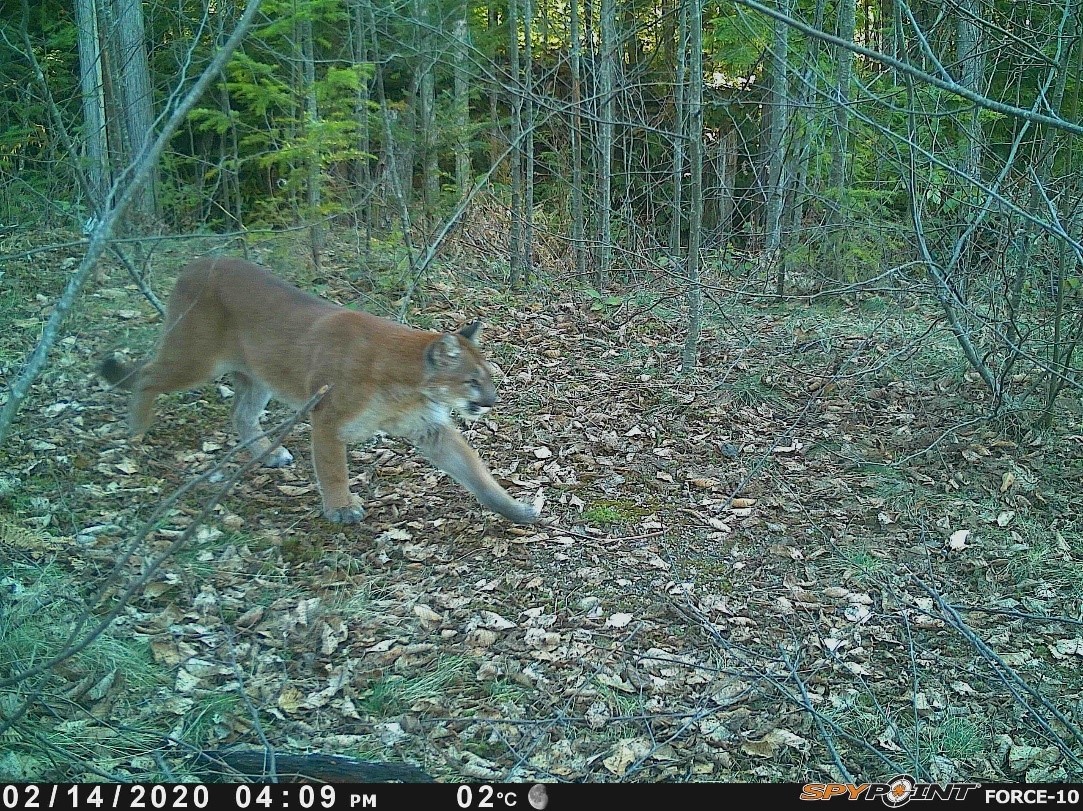
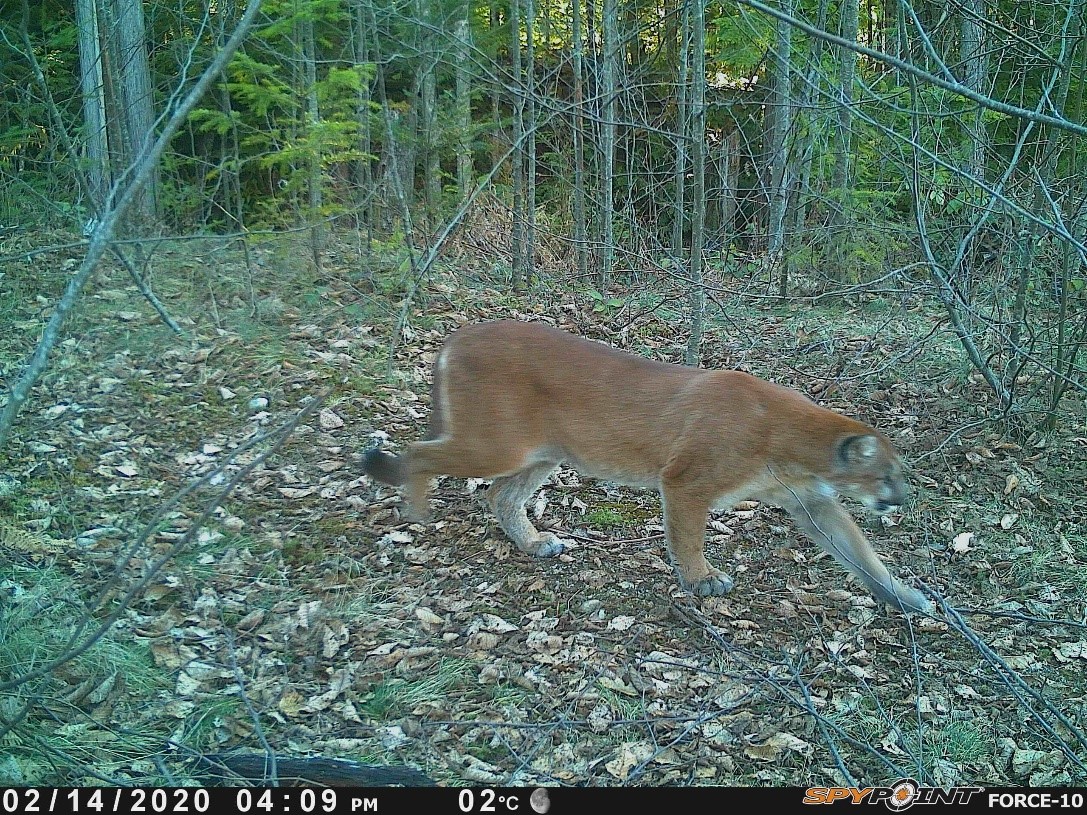
About the author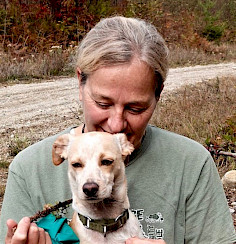
After taking early retirement from employment in the federal government, Mary Beth moved from Ottawa to Sechelt, BC in July 2018. She bought her first camera trap in April 2019, and now has 4 cameras in various locations near Sechelt. She enjoys tracking and viewing wildlife (via camera trap or in person) and is currently using them to document and understand movements and group structure of a small herd of Roosevelt elk that are often detected on her cameras. Mary Beth is also using her cameras to document the cougars and bobcats in the area. She is looking forward to increasing her involvement as a citizen scientist with WildCAM.